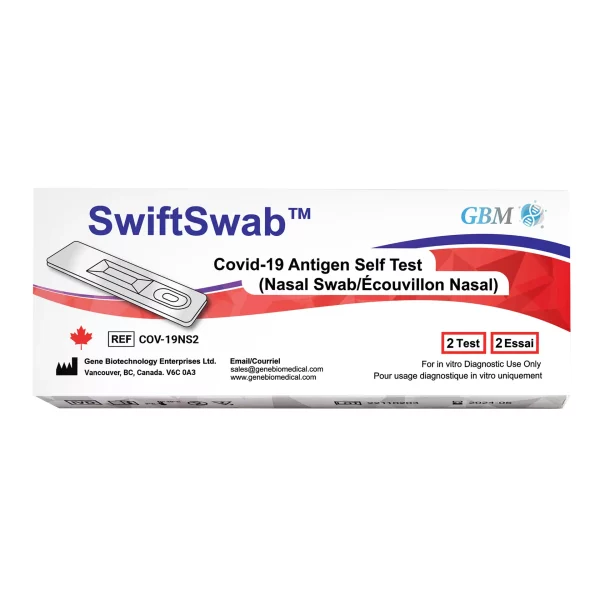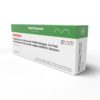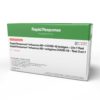Vitamin D is an essential nutrient that strengthens your bones, keeps your immune function healthy and regulates your hormones.
While a vitamin D test measures the levels of this crucial vitamin in your blood, interpreting test results can be confusing.
Understanding the factors that can influence vitamin D levels and what the test results signify can help you make informed decisions for your health.
Why is vitamin D testing essential?
While it’s possible to obtain vitamin D through sunlight exposure and dietary sources, many factors can affect your ability to maintain optimal vitamin D levels, including:
- Limited sun exposure
- Geographical location
- Skin pigmentation
- Age
- Certain medical conditions
- Medications
Here are four reasons why vitamin D testing is essential.
1. It helps to identify possible deficiencies.
Testing can help determine if you have insufficient or deficient levels of vitamin D.
This is particularly important for high-risk groups, such as:
- The elderly
- People with limited sun exposure
- People with certain medical conditions
- People on medications that can affect vitamin D metabolism
2. It helps to know if you need supplementation.
Vitamin D supplementation is often recommended for those with low vitamin D levels.
Testing also helps your healthcare provider determine the dosage and duration of supplementation required based on your specific needs.
3. It helps to monitor treatment efficacy.
If you’re supplementing with vitamin D or making lifestyle modifications to increase your vitamin D levels, regular testing can help monitor the effectiveness of the interventions.
4. It helps to maintain optimal health.
Early detection of vitamin D deficiency can help prevent the onset of related health conditions. Regular testing can contribute to long-term health maintenance and overall well-being.
Interpreting vitamin D test results
Vitamin D test results provide valuable information about your vitamin D status.
Understanding and interpreting these results can help in assessing whether your vitamin D levels are optimal, deficient or potentially toxic.
How much vitamin D is enough?
The standard unit of measurement for vitamin D levels is nanograms per milliliter (ng/mL) or nanomoles per liter (nmol/L).
Though there are factors that influence the results, like age, laboratory and test used, here’s a general guideline for optimal vitamin D levels:
- Deficiency: Below 12 ng/mL
- Insufficiency: 12-20 ng/mL
- Normal level: 20-50 ng/mL
- High level: Above 50 ng/mL

What happens if you have low vitamin D levels?
Vitamin D levels below 20 ng/mL or 50 nmol/L indicate a deficiency, which can lead to various health problems.
Vitamin D deficiency symptoms may include:
- Fatigue
- Muscle weakness
- Bone pain
- Increased infection susceptibility
- Mood disorders
What happens if your vitamin D levels are too high?
Excessively high vitamin D levels start at above 100 ng/mL or 250 nmol/L. While vitamin D is essential, excessively high levels can be harmful and lead to toxicity, known as hypervitaminosis D.
Vitamin D toxicity is rare and usually occurs with long-term, high-dose supplementation. Here are some of its symptoms:
- Nausea
- Vomiting
- Poor appetite
- Constipation
- Kidney problems
Key takeaway
Vitamin D plays a crucial role in various aspects of your health, including bone health, immune function, muscle function, mood regulation and heart health.
Understanding and interpreting vitamin D test results is critical to maintaining all these.
For accurate assessment and further interventions, we recommend that you consult with your healthcare provider when interpreting vitamin D test results.Frequently asked questions
1. What is the normal range for vitamin D test results?
A 20-50 ng/mL vitamin D level is considered normal. However, a level below 20 ng/mL indicates a deficiency, whereas a level above 50 ng/mL indicates excess.
2. Should I stop taking vitamin D supplements if my test result is high?
You should consult your healthcare provider before discontinuing any supplements. Your provider may suggest decreasing your supplement dosage to maintain an average vitamin D level.
3. How often should I get my vitamin D levels tested?
The testing frequency depends on your specific health history and circumstances. Typically, healthcare providers may recommend testing every 1 to 2 years for those at risk of deficiency or those taking high-dosage supplements.
4. Does vitamin D supplementation increase the risk of toxicity?
High-dosage supplementation beyond the recommended intake increases the risk of toxicity. Regular monitoring of vitamin D levels is highly advised if you’re taking high-dosage supplements.
5. Can a vitamin D deficiency be corrected through diet alone?
While diet can help improve vitamin D levels, it may not be enough to correct a deficiency. Sun exposure and supplementation may also be necessary to achieve optimal vitamin D levels.
6. What conditions are associated with vitamin D deficiency?
Vitamin D deficiency has been linked with osteoporosis, muscle weakness, autoimmune disorders, infections and cardiovascular disease.




















































